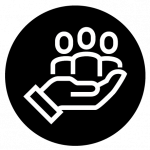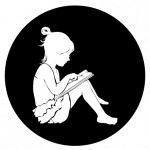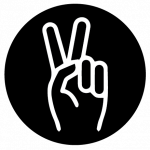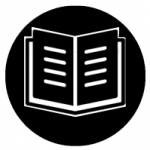AEI
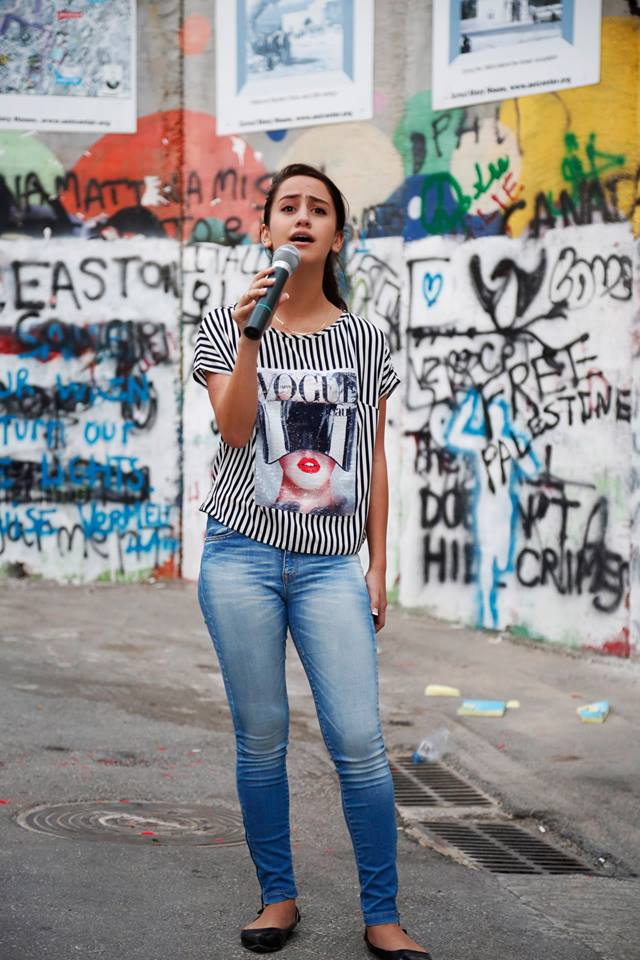
Arab Educational Institute
Rachel’s Tomb
Rachel’s Tomb, north of Bethlehem, is a place of religious significance for Christians, Jews, and Muslims alike. But Israel has illegally annexed the tomb area, enclosing it with a wall and denying Palestinians access. Arab Educational Institute (AEI) is trying to shed light on this injustice and restore access for all people. Here’s what you need to know about the situation and what you can do so that together we can rise up.
Organization
Arab Educational Institute (AEI) is a Palestinian organization that furthers education, peace building and dialogue in the occupied West Bank. After the organization’s creation in 1986 its location in central Bethlehem was used to provide classes to Palestinian youth on a broad variety of subjects, including computer programming, business administration, and languages. In 2000, it became an affiliated branch of Pax Christi International (a Catholic peace movement). AEI’s main local outreach is a network of some 30 schools and 10 women organizations in the Bethlehem, Hebron, and Ramallah areas.
AEI appeals to international volunteers to share in its peace work. AEI also works closely together with Palestinian NGOs at both a local and national level, especially in the fields of education and non-violent activities.
At present some 9 groups form the backbone of AEI’s activities: 4 women’s groups, 4 youth groups, and a family/parents group. The youth take part in different projects primarily supported by European development organizations and governments. AEI-Open Windows has a Youth House and a Sumud Story House in which courses and workshops focus on the effective communication of the Palestinian identity and reality.
Since 2011, the Arab Educational Institute has put 270 large weather-resistant posters on the Wall that surrounds Rachel’s Tomb in Bethlehem. Most posters display brief English-language stories-from-life written by Palestinian women and youth. The stories are about restrictions and common human rights violations Palestinians have faced but also about their sumud – Arabic for inner strength, steadfastness or resilience. The posters together make up the “Wall Museum.”
The “Wall Museum” is the last stage of a series of imaginative cultural activities inspired by initiatives in other wall-torn cities like Berlin and Belfast that began in 2008.
A side remark about the name: the use of quotation marks around “museum” is on purpose. The museum is not intended to become permanent. It is in fact our hope that the Wall museum stories contribute to cracks in the Wall, to its breaking down. In other words, we hope that the “Wall Museum” will become so successful that it will destroy itself.
Coming from different periods, the stories give a sense of history and suggest the possibility of change even from a person’s perspective in daily life. During the last years AEI has expanded the “Wall Museum” to areas near Aida refugee camp west of Rachel’s Tomb, with lively youth stories and photos as well as children fantasies. Recently we asked Palestinian youth and women to make paintings in workshops to give expression to their longing for freedom and peace. These paintings are now displayed on 50 new posters which show, in commemoration of last year’s anniversary of 50 years of occupation, 50 faces of occupation as well as 50 expressions of sumud.
The “Museum” is not only embedded in the local community but also in an international circle. The posters are sponsored by individuals and institutions abroad. The Ecumenical Accompaniment Program for Peace in Palestine and Israel (EAPPI), a project of the World Council of Churches, helped the “museum” by the very fact of being present during the fixing of the posters.
You can find AEI on their website at http://aeicenter.net/. Or join the Facebook group at https://www.facebook.com/groups/146586100662/ or find it on YouTube at https://www.youtube.com/user/aeiopenwindows1. You can also contact the organization directly at their email address info@aeicenter.org.
Topic
Once the area around Rachel’s Tomb, a pilgrimage place for Muslims, Christians, and Jews, was one of the liveliest in Bethlehem, located in the occupied West Bank. The Hebron Road connected Jerusalem with Bethlehem, and its northern section was in fact the busiest street in town. It was the gate from Jerusalem into Bethlehem. After entering Bethlehem along the main road, visitors either chose the direction to Hebron or the road to the Church of Nativity.
The reality now is different. During the 1990s Rachel’s Tomb developed into an Israeli military stronghold with the imposing Jerusalem-Bethlehem checkpoint close by. As such it became the focus of Palestinian protests, especially during the second Intifada that started in September 2000. Two years later Israel annexed the Tomb area to Jerusalem. In the period 2002-2005 Israel built walls around it, as well as a nearby parking lot. The Tomb became forbidden territory to inhabitants of Bethlehem. Since 2000 no less than 64 shops, garages, and workshops along the Hebron Road closed their gates. This was not just because of the fighting, shootings, and shelling going on during the Second Intifada, but also because the area became desolate as a result of the wall. People still remember that parents warned their children not to visit the area with its imposing 8-9 meter high concrete wall – almost twice as high as the former Wall in Berlin.
Story
“Hug” and “Rescue” by Melvina and Sylvana
“Hug”
During the first Intifada Israeli tanks stood in front of our house. Our young men had to pass here to reach their work places in Jerusalem. The soldiers used to stop and delay them. They were sometimes made to stand for hours with their head directed towards the wall of our house. One day, the soldiers stopped two young men. We couldn’t hear the talk but the soldiers started to beat them. Suddenly, a woman in the street came shouting and screaming. We heard her saying that the young men were her children. She hugged them and asked the soldiers what they wanted. She saved the young men whom she actually did not know.
Melvina, from Bethlehem
“Rescue”
During one of the Second Intifada days, I, a young Palestinian woman, was four months pregnant and lost my baby because of Israeli tear gas. I was terribly depressed since it was the second miscarriage I suffered. A week later I visited a medical doctor in Jerusalem for a check up. Coming out of the doctor’s clinic, I saw, nearby, on top of an escalator an Israeli child who was recklessly playing and about to fall down. Thoughts rushed through my mind. Should I leave him and let him die the way the Israeli soldiers let my boy die a week ago, or should I make a desperate attempt to grab him? All of a sudden, I felt an impulse that made me hurry forwards. Throwing myself in front of the boy I prevented his fall.
Sylvana, from Bethlehem
Action
Make a printout of one of the stories on the “Wall Museum” (images at http://aeicenter.org/?p=413) and share it on a physical wall of your school, business, etc. To make it stand out, include a sign proclaiming “RIP, Rachel.” Or share one of the images on your metaphorical Facebook wall. For your message, simply include “RIP, Rachel.” Explain that RIP means “Rest in Palestine.”
Take a photo of your own “Wall Museum” and share it on social media. Include a link to this page of the Kumi Now website along with the hashtags #RIPRachel, #StoptheWall, #KumiNow, and #Kumi47.
Literature
“Storyland” by Lorraine Adams
The Bethlehem of “O Little Town of Bethlehem” is gone. The guy who wrote it came to Bethlehem on a horse in 1865. It took him two hours to ride the six miles from Jerusalem that now takes twenty minutes. Never mind that it takes Palestinians four times that long to cross checkpoints and take circuitous routes along the Wall.
You should listen to another story about Bethlehem. It’s from the Torah. It’s about Rachel. She went into labor on the way from Jerusalem. “Rachel died and was buried on the way to Efrat, which is Bethlehem.” (Genesis 35:19) But the midwife told her she’d given birth to a son right before her soul left her, so that was a consolation. Not much of a story? There’s more. There’s an ancient commentary called a midrash that embroiders on the story, adding that her other son Yosef prayed by her grave when he was on his way to slavery in Egypt. “Mother, my mother who gave birth to me, wake up, arise and see my suffering.” Rachel replied, “Do not fear. Go with them, and God will be with you.”
It’s June 9, 2016, and I’m on my way to Rachel’s Tomb. I’m coming from Jerusalem, just as she did. I’m in a Kia and I’ve got a guide who says he’s an anarchist and a former Israeli Defense Force soldier…
When we get close to Bethlehem I see the Wall looming ahead. I can’t help it, I feel the same reverential dread and awe I did five years ago. This side of the Wall around Bethlehem is pristine, no graffiti. We take a banked turn and all of a sudden the Wall is on both sides of us. I’m in a cement canyon. It curves for some time, and then we come to a three-way intersection. We’re here.
There are so many children. There are the soldiers, who have to be at least eighteen but look more like sixteen to me…
I can’t see the tomb. It’s behind a fortress that grows out of the Wall. My guide points to a red squiggle on the map, a Muslim cemetery, and a refugee camp called Aida. I look back at the scene on the ground. All of this—the special road, the walled canyon, the walled intersection, the fortress, and the soldiers—so Israeli schoolchildren can go to a tomb of a woman they believe symbolizes the holiest mother of Judaism and do so unmolested by Palestinian children throwing stones. It’s not that simple, according to politicians, diplomats, military analysts, historians, theologians and cultural critics, but it’s also that simple.
So let’s see what this tomb looks like. I go through the door for women. At first all I see is a small room with women seated on benches, mumbling Hebrew from palm-sized prayer books. One or two have their necks thrown back and the little books’ pages rest open on their faces, covering eyes, nose, and mouth. Some are up against a perforated screen and they’re davening so strenuously it looks as if the bitty books will start flying. Through the screen I see a sarcophagus covered in white satin. Some of the women remind me of Mennonites, the plain people of the Pennsylvania Dutch on my father’s side of the family. They wear turbans that look like bonnets, long gathered skirts, and prairie aprons. Some are praying to have sons because Rachel did after she was childless for a long time. Even so, just like Jesus’s manger, this may not be the spot Rachel’s buried. Some archaeologists think she was buried north of Jerusalem near what is today called al-Ram…
I’m just outside Aida camp in Bethlehem…on the other side of the wall. There’s a metal panel in the wall; when Israeli soldiers lift it by remote control, you find yourself at Rachel’s Tomb. Aida camp boys still come here from time to time to demonstrate. I look up and see cameras. Soldiers sit in Jerusalem and watch the boys. When needed, they use a slender cannon attached to the top of the wall near the electrified wire to spray the boys with a liquid called the Skunk. I experienced its aroma on a dirt road where boys demonstrate north of here. It smells like sewage and sulfur, and not surprisingly, skunk. The Israeli research and development company Odortec developed it in cooperation with the Israeli police department, to replace “conventional tactics—from physical force all the way to teargas and water cannons.” Its website says it’s nontoxic, organic, and drinkable.
I have a Palestinian guide now. This one is tall, gray, and distinguished. He reminds me of a professor, with his white polo shirt tucked into his pressed khakis. He says he was on this street walking during the weekly Friday demonstration when he got sprayed with the Skunk. He wasn’t throwing rocks. He was going to a store. It took multiple showers and three days’ time for the putrid stink to leave his body. He’s matter-of-fact about this. He’s not a complainer. As we walk he says he’s not so sure the Israeli soldiers prefer the Skunk over tear gas. “I went on YouTube and saw a video of them saying, ‘We will throw tear gas at you until all of you die—children, women, old people.’ And so on. I hear this myself coming from them. So that’s the kind of war we have over here.”
From “Storyland” by Lorraine Adams, an American novelist and Pulitzer-winning journalist. This chapter appears in Kingdom of Olives and Ash, edited by Michael Chabon.
Resources
You may find more stories on this page: http://aeicenter.org/?p=413
You can watch a 9-minute video about the “Wall Museum”: https://vimeo.com/143457242
A slideshow of one story poster telling “The Pigeon,” a child’s story:
https://www.youtube.com/watch?v=TDtMYELs5L8
AEI has an information package about the Rachel’s Tomb area and the activities of the Sumud Story House.
Follow AEI on Social Media




